The Red River Delta is one of Vietnam’s most vibrant and historically significant regions. Known for its rich cultural heritage, stunning landscapes, and crucial role in the country’s economy, the delta offers a fascinating destination for travelers. This article delves into the geography, history, and current significance of the Red River Delta, providing a comprehensive overview of this remarkable area.
What is the Red River Delta?
Geography
The Red River Delta is located in the northern part of Vietnam, covering an area of approximately 15,000 square kilometers. It stretches from the western edge of Hanoi to the Gulf of Tonkin, encompassing several provinces including Hanoi, Haiphong, Nam Dinh, and Thai Binh. The delta is named after the Red River, which originates in the Yunnan province of China and flows southeast through Vietnam before emptying into the Gulf of Tonkin. The river’s reddish-brown silt, which it carries from the mountainous regions, gives the river and the delta their distinctive name.
History of the region
The Red River Delta has a rich history that dates back thousands of years. It is the cradle of Vietnamese civilization, where ancient communities developed complex agricultural practices, including wet rice cultivation, which remains a staple of the local economy. The region is also the birthplace of water puppetry, a traditional Vietnamese art form that originated in the rice paddies. During the Vietnam War, the delta was heavily bombed by United States warplanes, significantly impacting the area’s infrastructure and landscape.
The delta today
Today, the Red River Delta is a vital economic hub for Vietnam. It is home to nearly a third of the country’s population, with over 18 million people living in the delta itself. The region is characterized by extensive rice cultivation, which remains the primary occupation for many inhabitants. However, the delta also hosts a variety of other economic activities, including fisheries, aquaculture, land reclamation for agriculture, harbor construction, and mangrove forestry.
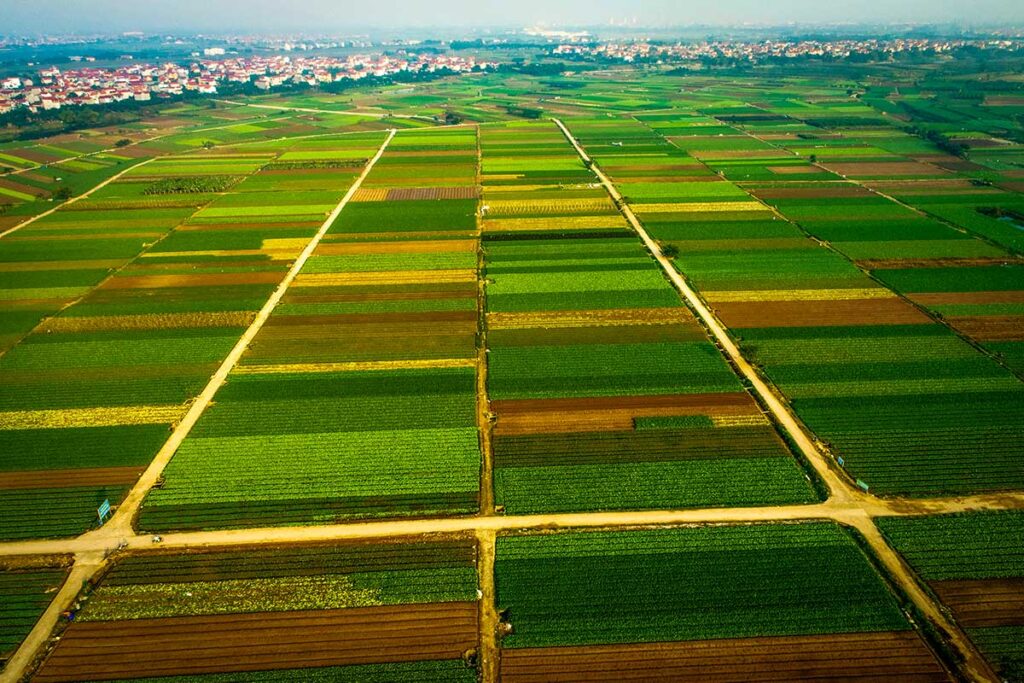
The delta is dotted with large industrial zones, particularly in cities like Viet Tri, Hanoi, Haiphong, and Nam Dinh, contributing significantly to Vietnam’s industrial output. Despite its economic importance, the delta faces several environmental challenges, such as seasonal storms, flooding, coastal erosion, silting, and saltwater intrusion, which affect both the socio-economic development and the livelihoods of the people living there.
Biggest highlights of Red River Delta
1. Hanoi
Hanoi, the capital city of Vietnam, is a vibrant metropolis known for its rich history, bustling street life, and cultural landmarks. Situated in the heart of the Red River Delta, Hanoi is a city where ancient traditions and modernity blend seamlessly. The Red River runs through the city, playing a crucial role in its development and daily life. The river has historically provided a water source, transportation routes, and fertile lands for agriculture, significantly influencing Hanoi’s growth and prosperity.
Long Bien Bridge

Long Bien Bridge, built during the French colonial period, is an iconic symbol of Hanoi. Spanning the Red River, it connects two parts of the city and serves as a vital transportation route. The bridge’s existence is a direct result of the river, showcasing the strategic importance of the Red River for connectivity and commerce.
Banana Island
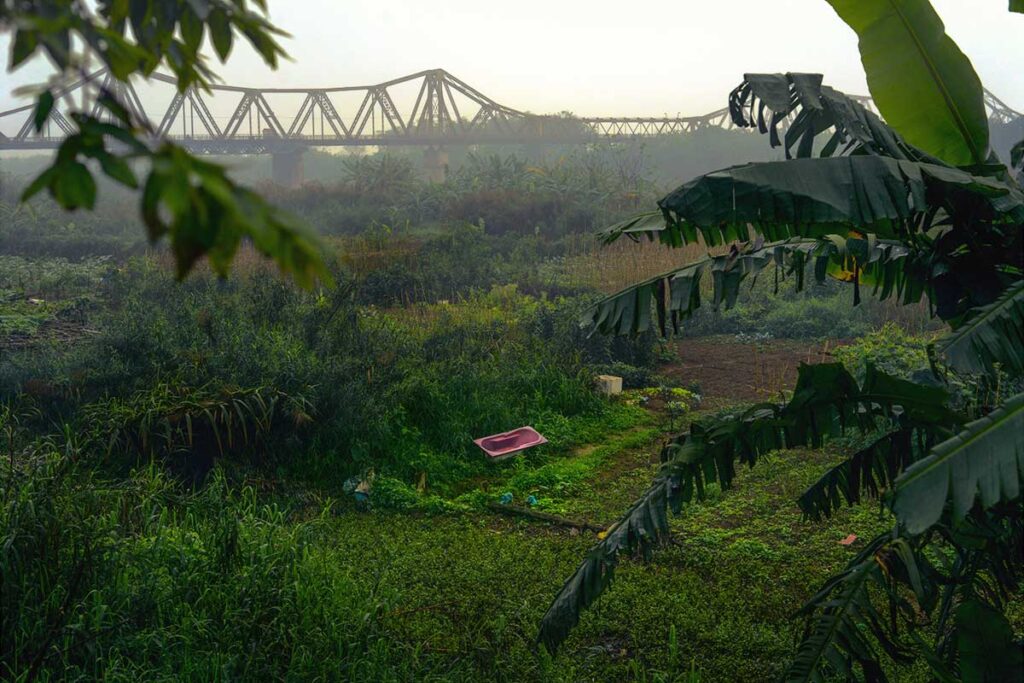
Banana Island, located in the middle of the Red River, is a serene oasis away from the bustling city. This island is primarily used for agriculture, benefiting from the fertile silt deposited by the Red River. The lush greenery and banana plantations highlight the agricultural richness provided by the river’s delta.
2. Halong Bay
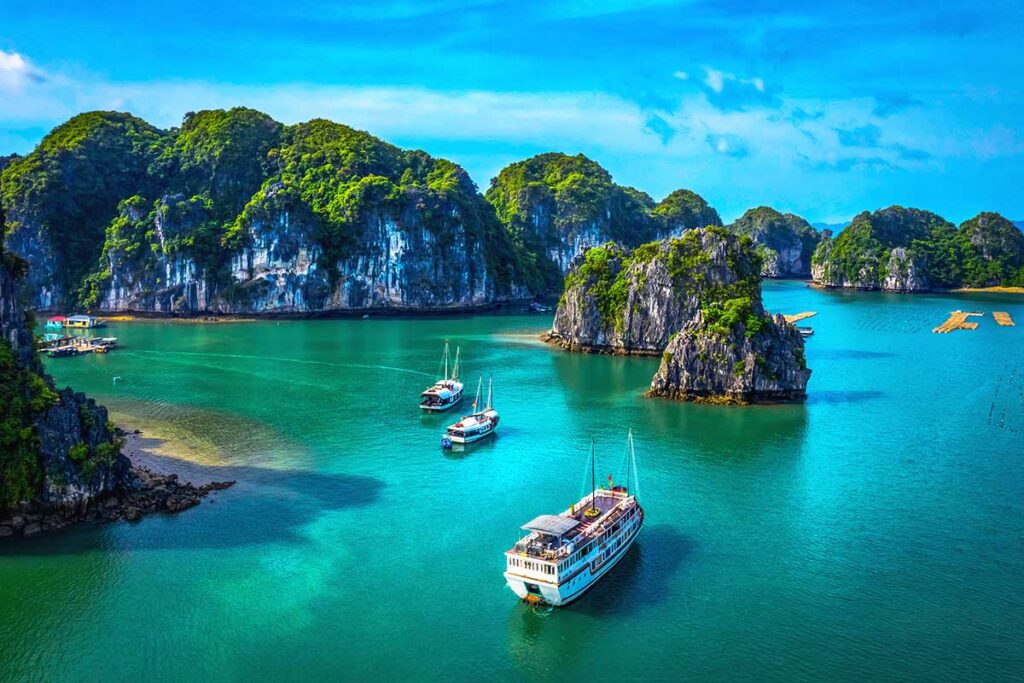
Halong Bay, a UNESCO World Heritage Site, is renowned for its emerald waters and thousands of towering limestone islands topped with rainforests. While Ha Long Bay is located on the edge of the Red River Delta, the sediments carried by the Red River contribute to the bay’s unique ecosystem. The nutrient-rich waters support diverse marine life and create stunning natural landscapes, making it one of Vietnam’s most visited destinations.
3. National Parks in the Red River Delta
The Red River Delta is home to several national parks that protect the region’s biodiversity and natural beauty. These parks are crucial for preserving the unique ecosystems influenced by the Red River and its tributaries.
Cuc Phuong National Park
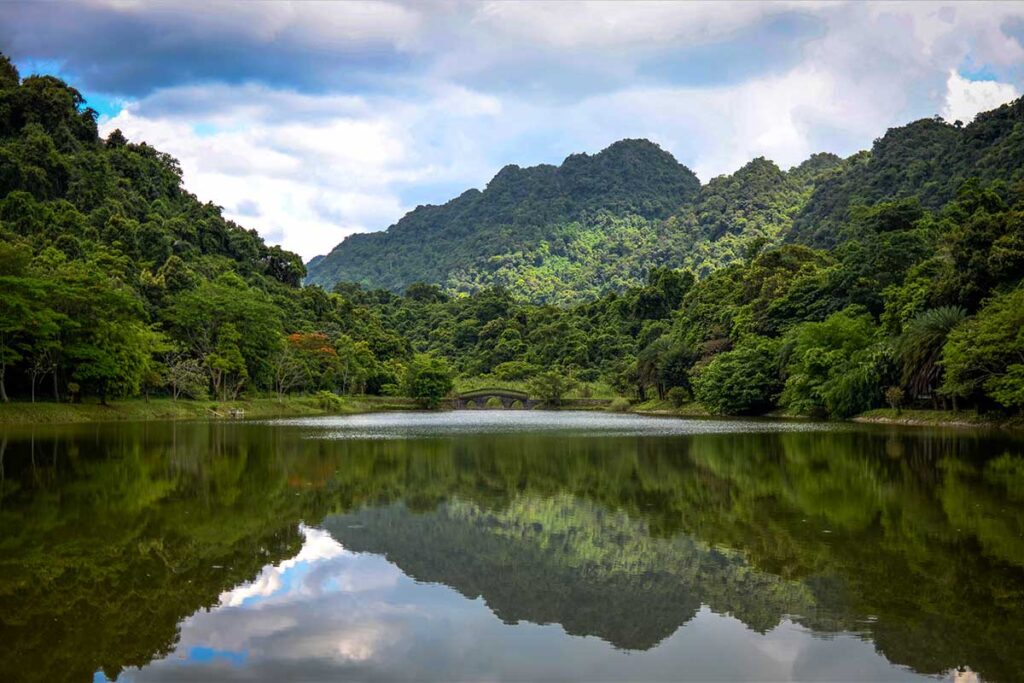
Cuc Phuong National Park, Vietnam’s oldest national park, is a lush tropical rainforest that houses diverse flora and fauna. The park benefits from the water and nutrients provided by the Red River, supporting its rich biodiversity. Visitors can explore its dense forests, ancient trees, and wildlife, including langurs and various bird species.
Xuan Thuy National Park

Xuan Thuy National Park is a coastal wetland located in the estuary of the Red River. It is a crucial habitat for migratory birds and other wildlife. The park’s existence and health are directly tied to the Red River’s flow, which brings nutrients and sediments that sustain the wetland ecosystem. This area is ideal for birdwatching and exploring Vietnam’s coastal biodiversity.
4. Ninh Binh
Ninh Binh, often referred to as “Ha Long Bay on land,” is a province known for its karst landscapes, ancient temples, and scenic waterways. The Red River Delta’s influence is evident in Ninh Binh’s fertile plains and abundant water sources.
Trang An Scenic Landscape Complex
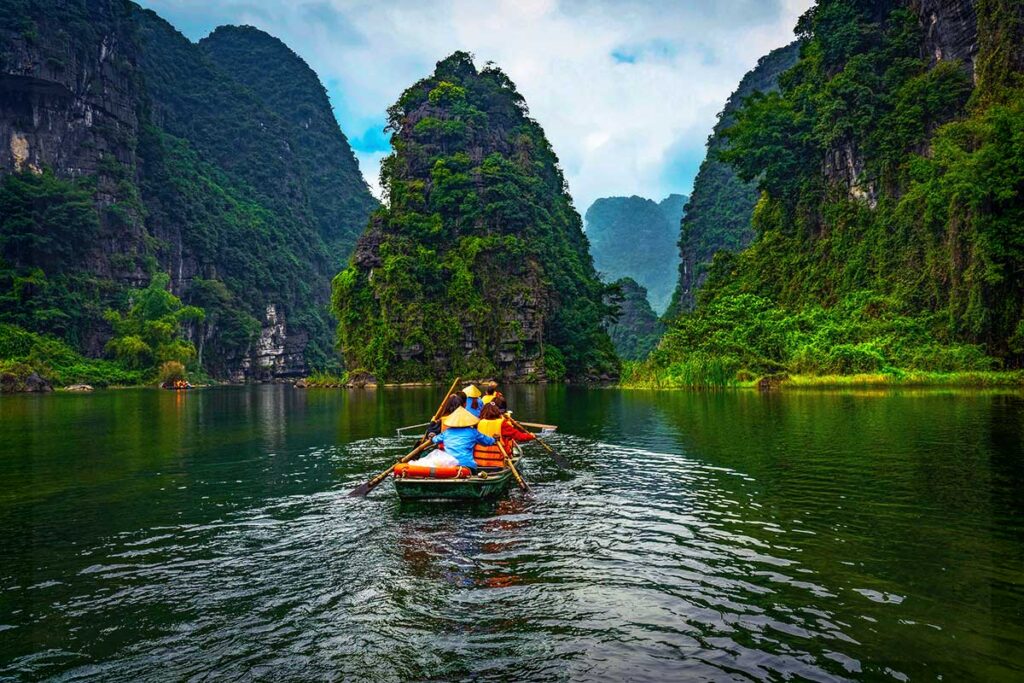
Trang An Scenic Landscape Complex, a UNESCO World Heritage Site, features stunning karst mountains, caves, and rivers. The Red River’s influence is seen in the alluvial deposits that have created fertile valleys and waterways, making Trang An a lush and picturesque destination.
Tam Coc

Tam Coc, meaning “three caves,” is known for its boat rides through limestone caves and along the Ngo Dong River. The Red River’s sediment contributes to the fertility of the surrounding rice paddies, enhancing the region’s agricultural productivity and scenic beauty.
Van Long Nature Reserve
Van Long Nature Reserve is a wetland area that provides a habitat for many rare and endangered species. The reserve’s ecosystem benefits from the Red River’s nutrient-rich waters, which support its diverse flora and fauna. Visitors can enjoy boat tours and observe the natural beauty and wildlife.
5. Craft Villages along the Red River
The Red River Delta is dotted with traditional craft villages, where artisans produce pottery, silk, and other handicrafts. These villages have thrived due to the resources and transportation routes provided by the Red River.
Bat Trang Pottery Village
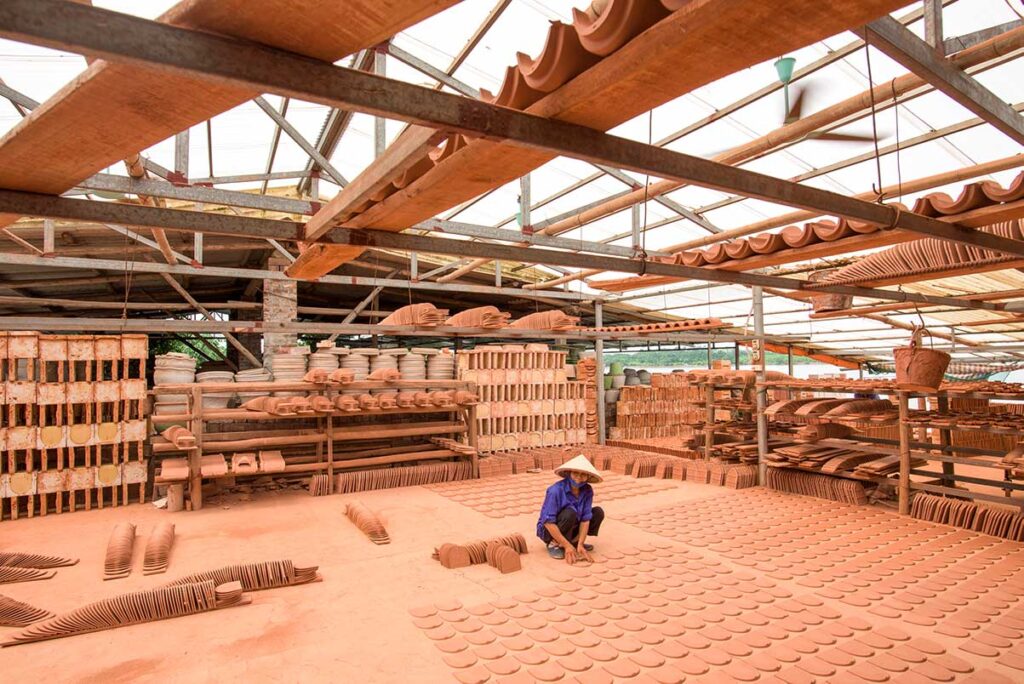
Bat Trang Pottery Village, located on the banks of the Red River, is famous for its high-quality ceramics. The clay used in pottery making is sourced from the riverbanks, showcasing the direct impact of the Red River on local craftsmanship and industry.
Duong Lam Ancient Village
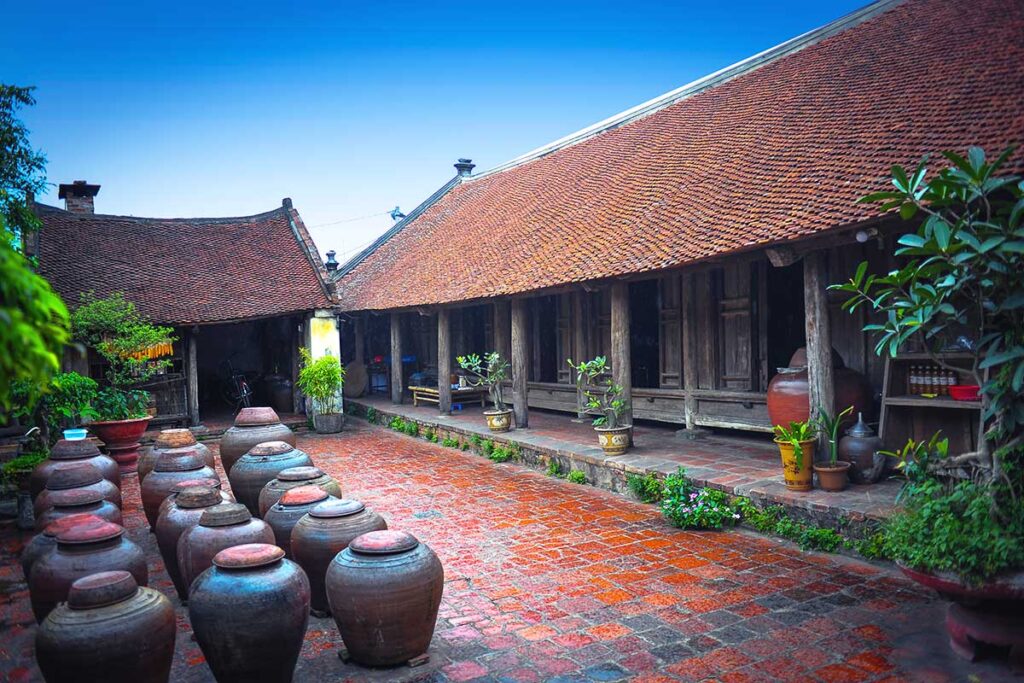
Duong Lam Ancient Village is known for its well-preserved traditional architecture and cultural heritage. The village’s location in the Red River Delta has allowed it to prosper through agriculture and trade, facilitated by the river’s resources.
6. Perfume Pagoda
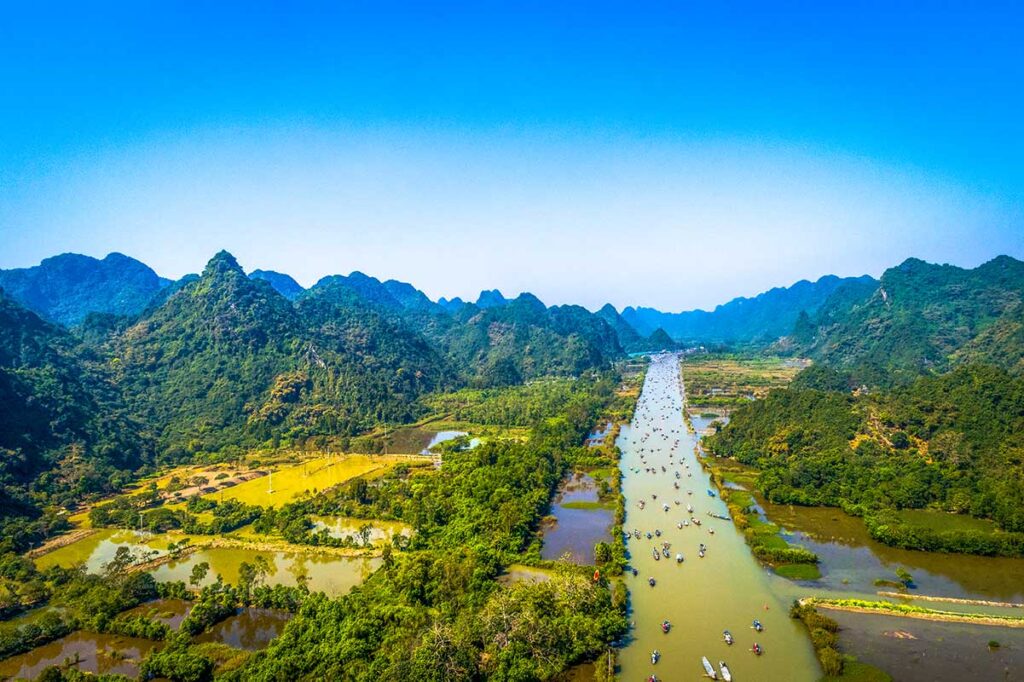
The Perfume Pagoda, a complex of Buddhist temples and shrines, is a significant pilgrimage site in Vietnam. Located in the limestone hills of the Red River Delta, the pagoda is accessible by boat along the Yen Stream, a tributary of the Red River. The river’s flow has shaped the landscape, creating a serene and spiritual environment for visitors and pilgrims.
How to explore the Red River Delta
Limousine buses & Private cars
For those looking to visit popular sights such as Trang An and Tam Coc in Ninh Binh or other renowned destinations like the Perfume Pagoda, limousine buses are an excellent choice. These buses are both affordable and comfortable, providing a convenient way to travel between major attractions.
For less frequented areas, such as craft villages or the more remote countryside, hiring a private car with a driver for the day allows you the flexibility to explore at your own pace and access places that are off the beaten path.
Cycling
Cycling is a fantastic way to discover the peaceful countryside of the Red River Delta. Riding along the Red River, you can visit charming villages, experience the local lifestyle, and enjoy the serene landscapes. Bikes can be rented for independent exploration, or you can join a cycling tour to benefit from a guided experience.
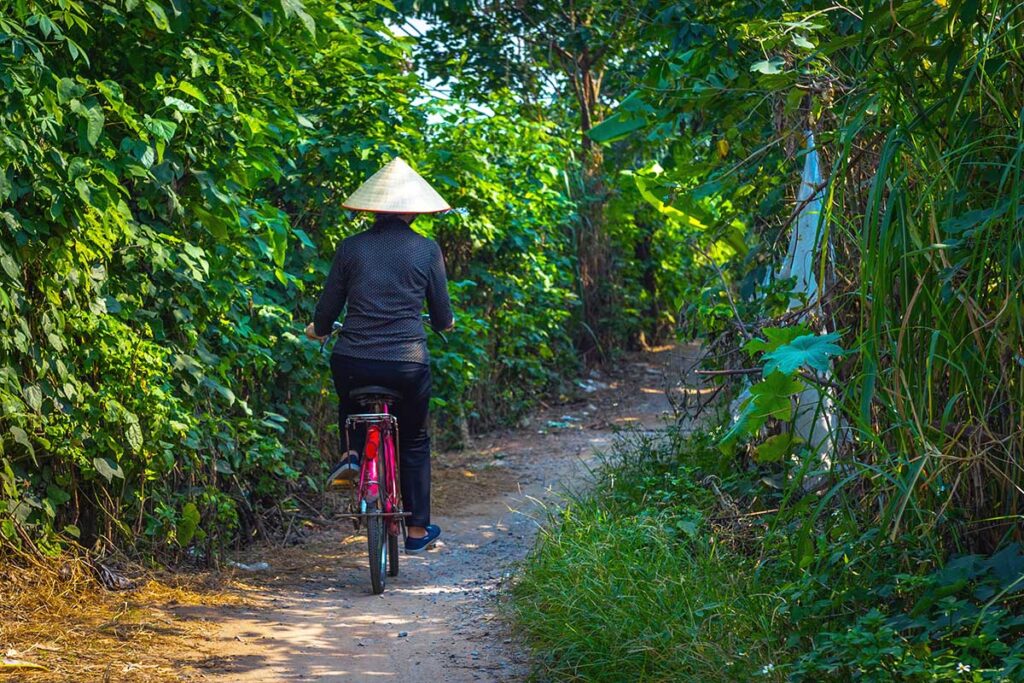
For those looking to experience cycling in a short and manageable timeframe, we from Local Vietnam offer a cycling tour from Hanoi to Banana Island. This tour is just a few hours long and conveniently starts from the Old Quarter, providing a quick yet immersive escape into the rural side of Hanoi.
Motorbike
Renting a motorbike in Hanoi is another exciting way to explore the Red River Delta. The countryside areas are peaceful and scenic, making for a pleasant ride. However, the traffic around Hanoi can be very crowded and challenging, so this option is only recommended for those with a valid license, an International Driving Permit (IDP), and some experience riding motorbikes. For those who meet these criteria, exploring the delta by motorbike offers a sense of freedom and adventure, allowing you to discover hidden gems and travel like a local.
Boats and Cruises
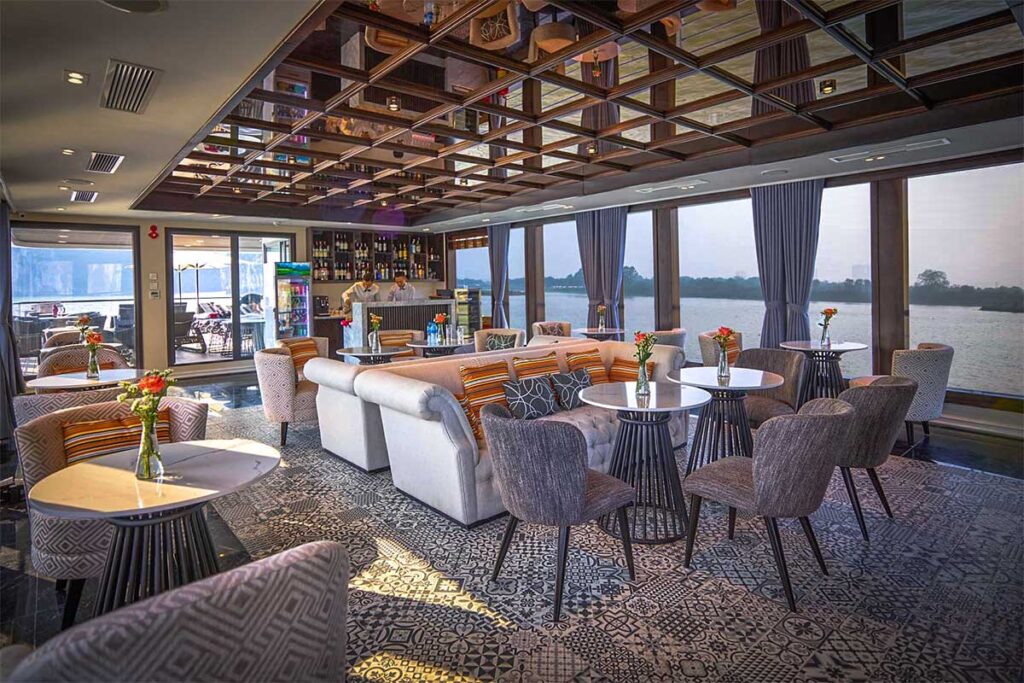
Exploring the Red River Delta by boat offers a unique perspective on the region’s beauty and culture. River cruises and boat tours allow you to glide through scenic waterways, visit floating villages, and see lush landscapes that are inaccessible by road. Dinner cruises on the Red River are particularly enchanting, offering a blend of scenic views and delicious local cuisine as you sail past illuminated cityscapes and tranquil rural areas.





